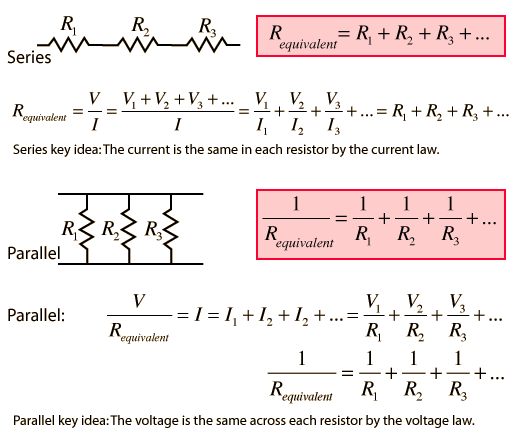Resistance

|
The electrical resistance of a circuit component or device is defined as the ratio of the voltage applied to the electric current whichflows through it:  If the resistance is constant over a considerable range of voltage, then Ohm's law, I = V/R, can be used to predict the behavior of the material. Although the definition above involves DC current and voltage, the same definition holds for the AC application of resistors. |
Whether or not a material obeys Ohm's law, its resistance can be described in terms of its bulk resistivity. The resistivity, and thus the resistance, is temperature dependent. Over sizable ranges of temperature, this temperature dependence can be predicted from a temperature coefficient of resistance.
| Conductors and insulators | Resistor combinations | Non-ohmic resistance: the electric pickle |
| AC behavior of resistor | Common carbon resistors |
DC Circuits
| HyperPhysics*****Electricity and magnetism | R Nave |


